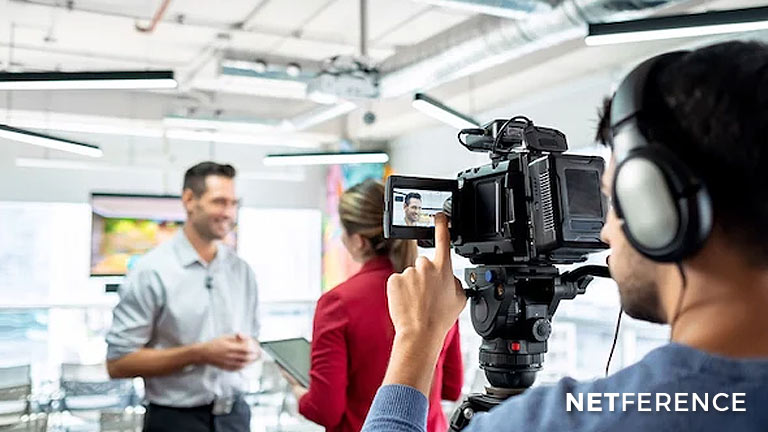
Nowadays, plenty of business is done virtually.
For instance, you might begin your morning by answering emails and editing a colleague’s blog post via Google Doc. Your colleague is working from home today, so you Slack him to let him know when the piece is ready.
In the afternoon, you have a 1:1 via Zoom with your remote manager.
Then, around 4 PM, you log into a company’s webinar to learn more about Social Media Marketing in 2020. The webinar has a panel of experts, and you’re able to download the recorded webinar later for future reference.
Undoubtedly, online tools and experiences are an integral part of a modern marketer’s role.
However, there is one aspect of business that seems, until recently, almost entirely untouched by virtual experience: conferences.
Our historic mindset around conferences is that we board a plane to a conference, bring our business cards, and prepare ourselves for a week of keynote speakers, breakout sessions, and networking events that enable us to spread the word about our own products and services, while collaborating with other marketers who might have useful tools or suggestions of their own.
In 2020, there will likely be a rise of virtual conferences. Here, let’s explore the benefits of virtual conferences, take a look at some examples of successful virtual conferences to inspire you, and check out a few tools that can help you plan your own.
But first — let’s talk about why virtual conferences can benefit your business in the future.
Virtual Conference Benefits
There are plenty of major benefits to hosting a virtual conference.
For one, it can lower the price of admission, enabling smaller businesses with limited budgets to purchase tickets to your conference and offer their own unique insights.
It also lowers the cost your business would have to pay for conference space, on-hand staff, catering, security, and much more.
Additionally, it allows people from across the globe to interact with each other without needing to spend exorbitant amounts on flights and hotels. Imagine how much easier it is for marketers from India, Ireland, Australia, and the U.S. to collaborate virtually, rather than trying to gather in-person.
It also may help you attract high-demand speakers who don’t have the time to commit to an in-person conference, but are happy to share industry takeaways via a quick video call or pre-recorded presentation.
Additionally, an online conference enables you to create a product — recordings from your conference — that you can continue to share and use as a lead generation tool for months and years after the initial live launch.
And, finally, there’s the obvious: sometimes unforeseen circumstances can make in-person conferences in certain locations simply impossible.
Emily Raleigh, HubSpot’s Marketing Manager of Brand and Strategic Partnerships, provides some advice if you suddenly find yourself shifting your in-person event to a virtual one: “If you are shifting from a live event, try to add extra value to the viewers who are now tuning in online. Do an extra session. Offer more Q&A time. Give an extra special offer. Find creative ways to add extra delight moments.”
